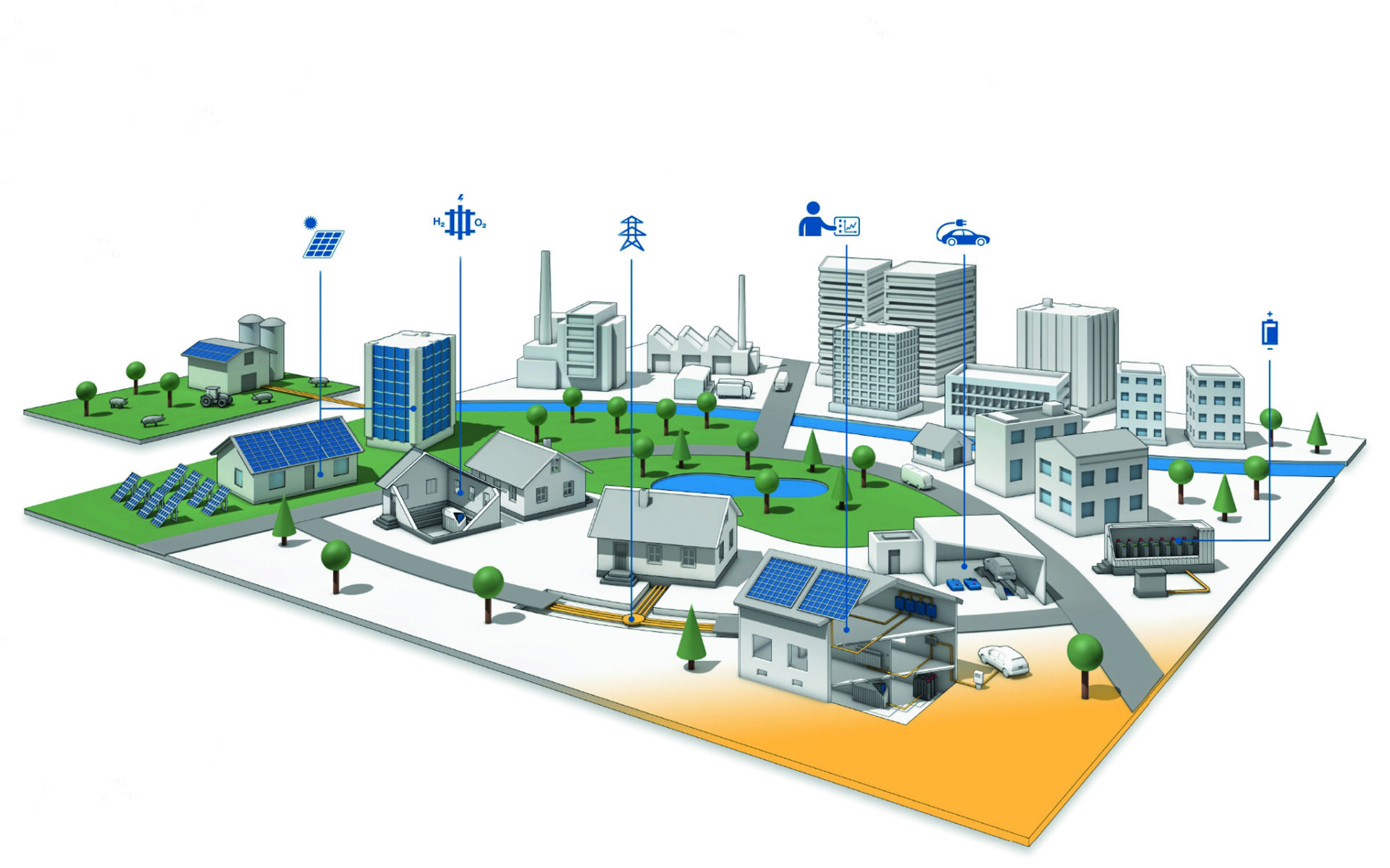The distributed energy generation systems market refers to the market for energy generation systems that are decentralized and located close to the point of energy consumption. These systems, also known as distributed energy resources (DERs), generate electricity using renewable or non-renewable energy sources, such as solar power, wind power, biomass, geothermal energy, and combined heat and power (CHP) systems. Distributed energy generation systems are often installed in residential, commercial, and industrial buildings, as well as in communities and remote areas.
The global distributed energy generation market size was valued at $246.4 billion in 2020, and is forecasted to reach $919.6 billion by 2030, growing at a CAGR of 14.2% from 2021 to 2030.
Overview of the Market:
- Growth Drivers: The distributed energy generation systems market has been experiencing significant growth due to several factors, including increasing demand for electricity, growing awareness about renewable energy sources, declining costs of renewable technologies, and government incentives and policies promoting the adoption of distributed energy systems.
- Renewable Energy Integration: Distributed energy generation systems play a crucial role in the integration of renewable energy into the existing power grid. These systems help reduce reliance on centralized power plants and transmission infrastructure, enhancing grid resilience and enabling a cleaner and more sustainable energy mix.
- Technological Advancements: Advancements in technology, particularly in solar panels, wind turbines, energy storage systems, and smart grid technologies, have bolstered the growth of distributed energy generation systems. Improved efficiency, reliability, and cost-effectiveness of these technologies have made them more accessible and attractive to consumers.
- Energy Independence and Resilience: Distributed energy generation systems offer benefits such as energy independence and resilience. By generating electricity on-site, consumers can reduce their dependence on the grid and ensure a reliable power supply, especially during grid outages or emergencies.
- Environmental Impact: The increasing focus on reducing greenhouse gas emissions and mitigating climate change has propelled the adoption of distributed energy generation systems. These systems produce clean and renewable energy, reducing reliance on fossil fuels and contributing to a more sustainable energy future.
- Market Segmentation: The distributed energy generation systems market can be segmented based on technology, end-user, and geography. Technologies include solar photovoltaic (PV) systems, wind turbines, biomass systems, geothermal systems, and CHP systems. End-users comprise residential, commercial, and industrial sectors, as well as communities and utilities.
- Challenges: Despite the growth potential, the distributed energy generation systems market faces challenges such as high upfront costs, limited access to financing, regulatory barriers, grid integration issues, and technical complexities associated with managing decentralized energy resources.
- Future Outlook: The distributed energy generation systems market is expected to continue growing as renewable energy becomes increasingly cost-competitive and governments worldwide strive to meet sustainability targets. Advancements in energy storage technologies and digitalization of the energy sector are anticipated to further enhance the integration and management of distributed energy resources.
It’s important to note that market dynamics can vary by region and are subject to changes in government policies, technological advancements, and market forces.
The demand for distributed energy generation systems has been steadily increasing in recent years. Several factors contribute to this growing demand:
- Energy Security and Resilience: Distributed energy generation systems provide energy security and resilience by reducing reliance on centralized power generation and the vulnerability of long-distance transmission infrastructure. With distributed systems, consumers can generate their own electricity on-site, ensuring a reliable power supply even during grid outages or emergencies.
- Cost Savings: Distributed energy generation systems, particularly those based on renewable energy sources, offer potential cost savings over the long term. As the costs of solar panels, wind turbines, and other renewable technologies continue to decline, the installation and operational expenses of distributed systems become more competitive with traditional centralized power plants.
- Environmental Awareness: Increasing awareness about the environmental impact of conventional energy sources has led to a growing demand for clean and renewable energy solutions. Distributed energy generation systems, such as solar and wind power, help reduce greenhouse gas emissions and mitigate climate change. Consumers are increasingly motivated to adopt these systems to support sustainability goals and reduce their carbon footprint.
- Government Policies and Incentives: Many governments worldwide have implemented policies and incentives to promote the adoption of distributed energy generation systems. These can include feed-in tariffs, tax credits, grants, and regulatory frameworks that facilitate the integration of distributed energy resources into the existing power grid. Such initiatives drive market demand by making distributed systems more financially attractive for consumers and businesses.
- Energy Independence: Distributed energy generation systems offer energy independence by allowing consumers to generate their own electricity and reduce dependence on utility companies. This appeal of self-sufficiency is particularly significant for remote areas, off-grid communities, and industries seeking reliable power sources.
- Technological Advancements: Advances in distributed energy generation technologies have improved system efficiency, reliability, and cost-effectiveness. The integration of energy storage systems, smart grid technologies, and digital energy management solutions has further enhanced the value proposition of distributed systems, boosting their demand in the market.
- Market Segments: The demand for distributed energy generation systems varies across different market segments. Residential consumers are increasingly adopting rooftop solar systems, while commercial and industrial sectors are installing larger-scale solar, wind, and CHP systems to meet their energy needs. Communities, including housing developments and microgrids, are also embracing distributed systems for local energy production and resilience.
Overall, the demand for distributed energy generation systems is expected to continue growing as the benefits of energy security, cost savings, environmental sustainability, and policy support become more widely recognized. Advancements in technology, decreasing costs, and the evolving energy landscape are likely to further accelerate this demand in the coming years.
We recommend referring our Stringent datalytics firm, industry publications, and websites that specialize in providing market reports. These sources often offer comprehensive analysis, market trends, growth forecasts, competitive landscape, and other valuable insights into this market.
By visiting our website or contacting us directly, you can explore the availability of specific reports related to this market. These reports often require a purchase or subscription, but we provide comprehensive and in-depth information that can be valuable for businesses, investors, and individuals interested in this market.
“Remember to look for recent reports to ensure you have the most current and relevant information.”
Click Here, To Get Free Sample Report: https://stringentdatalytics.com/sample-request/distributed-energy-generation-systems-market/3048/
Market Segmentations:
Global Distributed Energy Generation Systems Market: By Company
• Siemens Energy
• GE
• Alstom
• Ballard Power Systems
• Enercon
• OPRA Turbines
• Calnetix Technologies
• Gamesa Corp
• Canyon Hydro
• Goldwind
• Rolls-Royce
• Capstone Turbine Corporation
• Cargo & Kraft Turbin Sverige
• Mitsubishi Power Systems
• ClearEdge Power
• Caterpillar Power Plants
• Toyota Turbine and Systems
• Vestas
• Yingli Solar
Global Distributed Energy Generation Systems Market: By Type
• CHP
• Solar Photovoltaic
• Wind Turbine
• Fuel Cells
Global Distributed Energy Generation Systems Market: By Application
• Residential
• Building
• Commercial Applications
Global Distributed Energy Generation Systems Market: Regional Analysis
All the regional segmentation has been studied based on recent and future trends, and the market is forecasted throughout the prediction period. The countries covered in the regional analysis of the Global Distributed Energy Generation Systems market report are U.S., Canada, and Mexico in North America, Germany, France, U.K., Russia, Italy, Spain, Turkey, Netherlands, Switzerland, Belgium, and Rest of Europe in Europe, Singapore, Malaysia, Australia, Thailand, Indonesia, Philippines, China, Japan, India, South Korea, Rest of Asia-Pacific (APAC) in the Asia-Pacific (APAC), Saudi Arabia, U.A.E, South Africa, Egypt, Israel, Rest of Middle East and Africa (MEA) as a part of Middle East and Africa (MEA), and Argentina, Brazil, and Rest of South America as part of South America.
Visit Report Page for More Details: https://stringentdatalytics.com/reports/distributed-energy-generation-systems-market/3048/
Reasons to Purchase Distributed Energy Generation Systems Market Report:
- To obtain insights into industry trends and dynamics, including market size, growth rates, and important factors and difficulties. This study offers insightful information on these topics.
- To identify important participants and rivals: This research studies can assist companies in identifying key participants and rivals in their sector, along with their market share, business plans, and strengths and weaknesses.
- To comprehend consumer behaviour: these research studies can offer insightful information about customer behaviour, including preferences, spending patterns, and demographics.
- To assess market opportunities: These research studies can aid companies in assessing market chances, such as prospective new goods or services, fresh markets, and new trends.
- To make well-informed business decisions: These research reports give companies data-driven insights that they may use to plan their strategy, develop new products, and devise marketing and advertising plans.
In general, market research studies offer companies and organisations useful data that can aid in making decisions and maintaining competitiveness in their industry. They can offer a strong basis for decision-making, strategy formulation, and company planning.
Click Here, To Buy Premium Report: https://stringentdatalytics.com/purchase/distributed-energy-generation-systems-market/3048/?license=single
About US:
Stringent Datalytics offers both custom and syndicated market research reports. Custom market research reports are tailored to a specific client’s needs and requirements. These reports provide unique insights into a particular industry or market segment and can help businesses make informed decisions about their strategies and operations.
Syndicated market research reports, on the other hand, are pre-existing reports that are available for purchase by multiple clients. These reports are often produced on a regular basis, such as annually or quarterly, and cover a broad range of industries and market segments. Syndicated reports provide clients with insights into industry trends, market sizes, and competitive landscapes. By offering both custom and syndicated reports, Stringent Datalytics can provide clients with a range of market research solutions that can be customized to their specific needs
Contact US:
Stringent Datalytics
Contact No – +1 346 666 6655
Email Id – sales@stringentdatalytics.com
Web – https://stringentdatalytics.com/




Leave a Reply